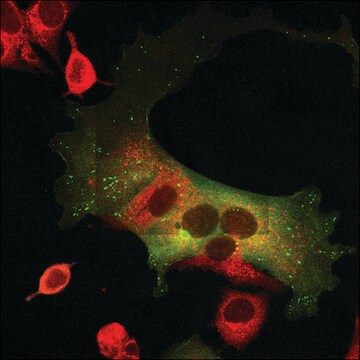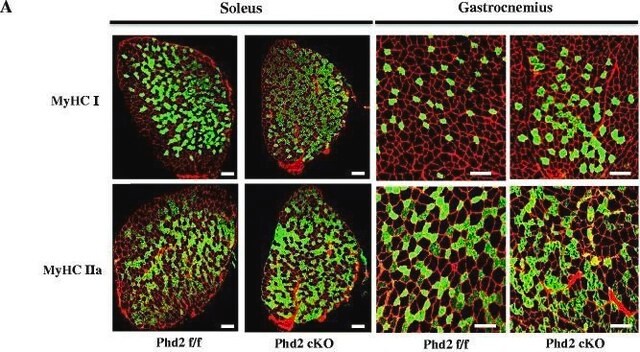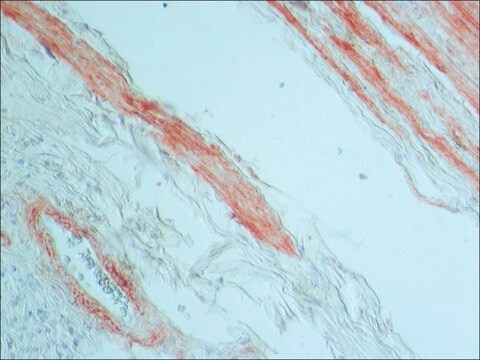B9277
Monoclonal Anti-Band 3 antibody produced in mouse
clone BIII-136, ascites fluid
About This Item
Prodotti consigliati
Origine biologica
mouse
Livello qualitativo
Coniugato
unconjugated
Forma dell’anticorpo
ascites fluid
Tipo di anticorpo
primary antibodies
Clone
BIII-136, monoclonal
contiene
15 mM sodium azide
Reattività contro le specie
human
tecniche
immunoprecipitation (IP): suitable using human erythrocytes
indirect immunofluorescence: suitable using methanol-fixed human erythrocytes
western blot: 1:5,000 using human erythrocytes
Isotipo
IgG2a
Condizioni di spedizione
dry ice
Temperatura di conservazione
−20°C
modifica post-traduzionali bersaglio
unmodified
Informazioni sul gene
human ... SLC4A1(6521)
Descrizione generale
Monoclonal Anti-Band 3 antibody detects Band 3 protein (90-100 kD) and several lower molecular mass peptides migrating in SDS-PAGE gels in the regions of 60, 40 and 20 kD. The product specifically binds to the cytoplasmic amino-terminal protein of band 3 (the epitope is approx. 20 kD from the N-terminal end). As the epitope is not located at the erythrocyte surface, the antibody product does not agglutinate red blood cells. Furthermore, its cell surface binding cannot be detected by an indirect agglutination assay. The antibody does not localize Band 3 from horse, bovine, pig, guinea pig, dog or mouse erythrocytes, nor does it localize Band 3 from nonerythroid human fibroblast extract.
Specificità
Immunogeno
Applicazioni
Azioni biochim/fisiol
Esclusione di responsabilità
Non trovi il prodotto giusto?
Prova il nostro Motore di ricerca dei prodotti.
Codice della classe di stoccaggio
10 - Combustible liquids
Classe di pericolosità dell'acqua (WGK)
nwg
Punto d’infiammabilità (°F)
Not applicable
Punto d’infiammabilità (°C)
Not applicable
Certificati d'analisi (COA)
Cerca il Certificati d'analisi (COA) digitando il numero di lotto/batch corrispondente. I numeri di lotto o di batch sono stampati sull'etichetta dei prodotti dopo la parola ‘Lotto’ o ‘Batch’.
Possiedi già questo prodotto?
I documenti relativi ai prodotti acquistati recentemente sono disponibili nell’Archivio dei documenti.
Il team dei nostri ricercatori vanta grande esperienza in tutte le aree della ricerca quali Life Science, scienza dei materiali, sintesi chimica, cromatografia, discipline analitiche, ecc..
Contatta l'Assistenza Tecnica.







